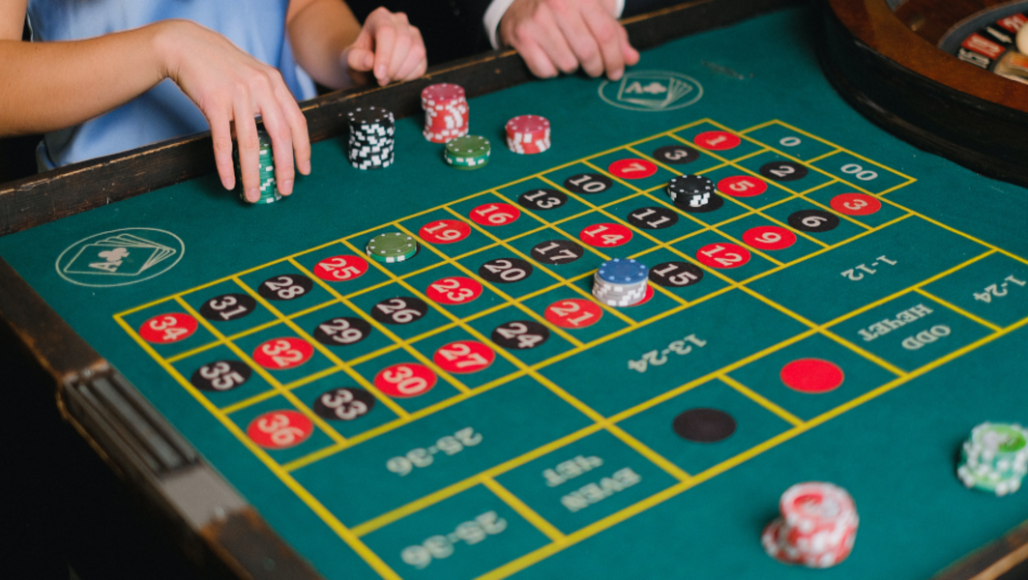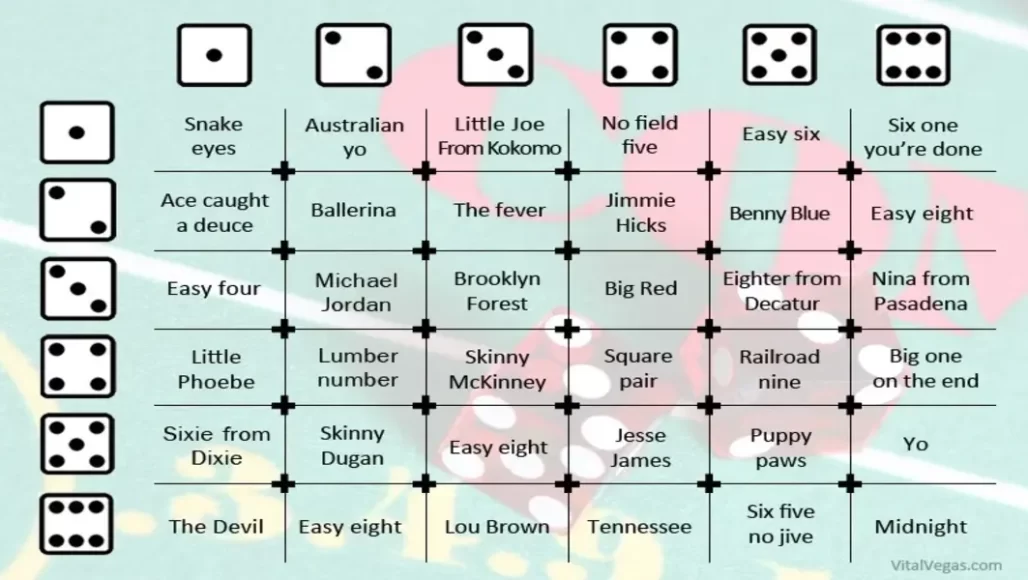Street Craps Rules: A Guide to the World of Dice Games

Street craps, a stripped-down, fast-paced variation of traditional casino craps, is often played on sidewalks, back alleys, or casual gatherings. Unlike its casino counterpart, this version involves less formality and more spontaneity, but it is no less exciting. To newcomers, street craps may seem chaotic, but once you understand the basic rules and gameplay, it becomes easier to follow, especially when equipped with the right terminology and dice slang.
In this comprehensive guide, we’ll break down the essentials of street craps rules, explore how to play street dice, and explain some of the jargon that you’ll likely hear in these games.
What is Street Craps?
Street craps differs from traditional casino craps in its setting, simplicity, and informality. Instead of playing on a regulated table, players use any available flat surface, often just a patch of sidewalk or a makeshift table. The equipment required is minimal—just a pair of dice and some cash for betting. In this way, street craps shares a certain camaraderie with informal poker games, where players gather around a table or even sit on the floor, letting the cards and cash do the talking.
At its core, the objective of street craps is simple: bet on the outcome of the roll of two dice. But the simplicity doesn’t mean there’s a lack of strategy. Players who know the ins and outs of street craps rules can leverage odds and patterns to gain an edge, much like experienced poker players who study hands, tells, and betting tendencies to tip the scales in their favor. In both games, understanding the subtleties of betting can turn a casual game into a strategic showdown.
Basic Street Craps Rules: How to Play

Street craps rules follow the same basic principles as traditional craps but are much more flexible, and they vary depending on local customs or house rules. Here’s a general breakdown of the game mechanics:
- The Shooter: The game begins with a shooter, the player designated to roll the dice. The shooter must place a bet to start the game.
- The Pass Line Bet: This is the most common bet in street craps. The shooter rolls the dice aiming for a 7 or 11 on the first roll (called the “come-out roll”) to win. If they roll a 2, 3, or 12, it’s a “crap out,” and they lose their bet. Any other number (4, 5, 6, 8, 9, 10) becomes the “point.”
- The Point: If the come-out roll doesn’t result in a win or loss, the shooter must roll the point number again before rolling a 7. Rolling a 7 before the point is achieved is called “sevening out,” which results in a loss for the shooter and pass line bettors.
- Side Bets and Odds: Players around the shooter can make side bets on various outcomes, such as whether the shooter will hit the point, whether the next roll will be a 7, or if the shooter will “crap out.” These side bets often add layers of excitement to the game and can follow creative house rules.
| Street Craps Key Rules | Explanation |
|---|---|
| Pass Line Bet | A bet that the shooter will roll a 7 or 11 on the come-out roll or hit the point after establishing it. |
| Crap Out | Rolling a 2, 3, or 12 on the come-out roll. The shooter loses, and the dice move to the next player. |
| The Point | A number established if the come-out roll isn’t a 7, 11, 2, 3, or 12. The shooter aims to roll this again before a 7. |
| Sevening Out | Rolling a 7 before rolling the point, which causes the shooter and pass line bettors to lose. |
| Side Bets | Players bet on additional outcomes, often using local or house rules to determine winning combinations. |
How to Play Street Dice
Now that you understand the basic street craps rules, you’re ready to dive into the practical side—how to play street dice. The beauty of street dice lies in its flexibility. While formal craps games require a casino layout, dealers, and chips, street dice is often a laid-back version where the thrill comes from the speed and unpredictability of the rolls. Here’s how you can get started:
- Gather Players and Cash: Street craps is typically played with a group of participants, all of whom put money into the game. Each player places their bets based on the outcome they expect.
- Choose a Shooter: Once everyone is in, the shooter is chosen. In some versions, the shooter is determined by rolling a high number on a single die.
- Roll the Come-Out: The shooter rolls the come-out roll, with a 7 or 11 resulting in an immediate win and a 2, 3, or 12 being a loss. If a point is established, the shooter keeps rolling until they hit the point or seven out.
- Betting Dynamics: Players around the shooter can place side bets, which can vary in complexity. Popular bets include wagering on whether the shooter will hit the point or whether the next roll will be a specific number.
- Keep the Game Moving: After the shooter either wins or sevens out, the dice move to the next shooter, and the cycle begins again. Quick, consecutive rolls maintain the high-energy nature of street dice.
Dice Slang: The Lingo of Street Craps

Understanding the dice slang used in street craps is half the fun. The game is often accompanied by colorful terms that spice up the action and create camaraderie between players. Here’s a list of some of the most common dice slang:
- Snake Eyes: A roll of two 1s, resulting in a total of 2. This is usually a losing roll.
- Little Joe: A total of 4 made up of a 1 and 3 or 2 and 2.
- Big Red: A roll of 7, often referred to with caution because calling out the number can supposedly “jinx” the game.
- Boxcars: A roll of two 6s, resulting in a total of 12.
- Easy Eight: A roll of 8 with two different numbers, such as 6 and 2 or 5 and 3.
- Point: The number the shooter needs to hit after the come-out roll.
Familiarizing yourself with these terms will help you follow the action and join in the lively banter that often accompanies street craps games. Knowing the dice slang also gives you an edge as it helps you understand the game flow and betting options more clearly.
House Rules and Variations
One of the unique aspects of street craps is the variability of the rules. Depending on where and with whom you’re playing, the street craps rules may be adjusted to suit local preferences. For instance, some groups might have their own twists on side bets, payout ratios, or even how the shooter is chosen.
According to some estimates, over 50% of street craps games incorporate some form of house rule, adding unpredictability and excitement to the game. Knowing the rules ahead of time or negotiating them before the game starts is essential to avoid confusion or disputes during play.
Conclusion: Why Street Craps Is So Popular
Street craps is more than just a dice game—it’s a cultural phenomenon that thrives in community settings, bringing people together for fun and competition. The simplicity of the equipment and the flexibility of the street craps rules make it accessible to just about anyone, anywhere. Whether you’re in a high-stakes alley game or a casual neighborhood gathering, learning how to play street dice offers a thrilling, fast-paced experience.
In addition to its grassroots appeal, street craps can also help players sharpen their betting strategies. By mastering the different bets and understanding how probabilities work, players can maximize their chances of winning.
If you’re interested in taking part in a game, make sure to familiarize yourself with the local house rules, learn the dice slang, and practice your rolls—because in street craps, every second counts.
FAQ
The biggest difference is the environment. Street craps is played informally without the casino setup, such as a table, chips, or dealers. It is also less structured and may follow locally created house rules, whereas casino craps is strictly regulated.
In street craps, the shooter rolls two dice. A roll of 7 or 11 on the first roll (the come-out roll) wins, while a 2, 3, or 12 is a loss, known as “crapping out.” Any other number establishes a point, and the shooter must roll that point again before rolling a 7 to win.
The come-out roll is the first roll of a round in street craps. If the shooter rolls a 7 or 11, they win immediately. If they roll a 2, 3, or 12, they lose, and a new round begins. If any other number is rolled, it becomes the point number that the shooter must hit before rolling a 7.
“Sevening out” occurs when the shooter rolls a 7 before hitting the point number they’ve previously established. This results in a loss for the shooter and pass line bettors, and the dice move to the next player.
Side bets allow players who aren’t the shooter to wager on various outcomes of the dice roll. These bets can include predicting whether the shooter will hit the point, roll a 7, or crap out. Side bets often follow house rules, which vary from game to game.
Yes, street craps rules can vary depending on the local customs and house rules of the group playing. These variations may affect how the game is started, how bets are placed, or how winnings are paid out. It’s important to clarify the rules before the game begins.
Street craps is popular because of its simplicity, accessibility, and social nature. Anyone with dice and some cash can play, making it a casual yet exciting game that can be played virtually anywhere. The use of dice slang and fast-paced action add to its appeal, creating a dynamic and unpredictable experience.